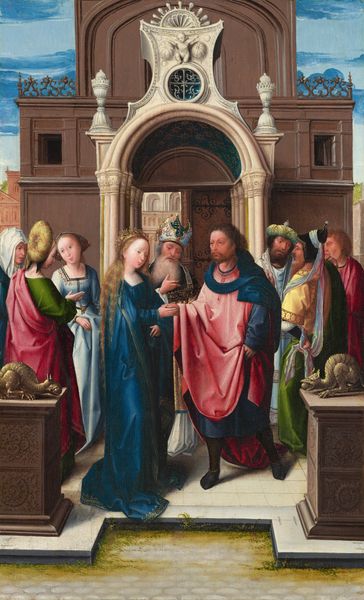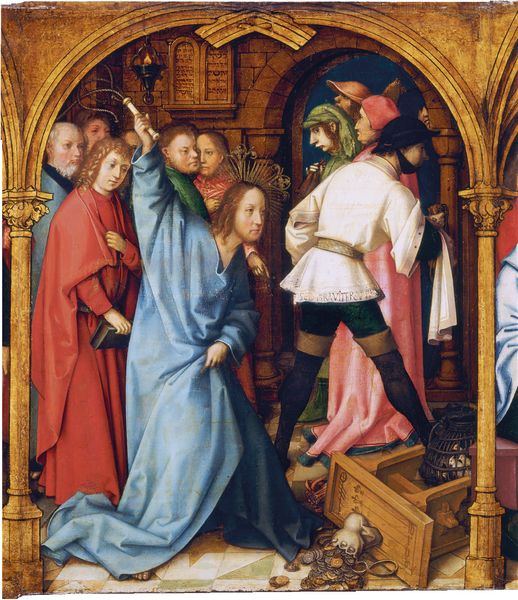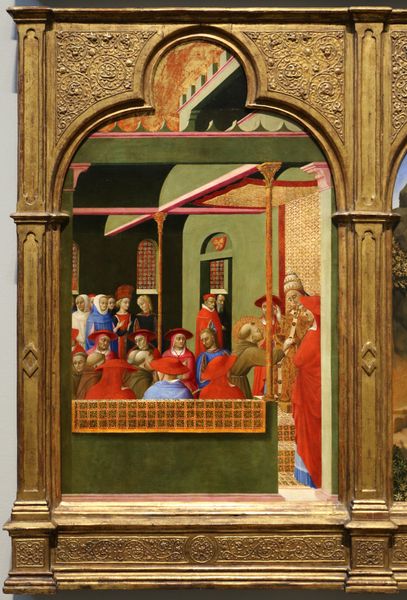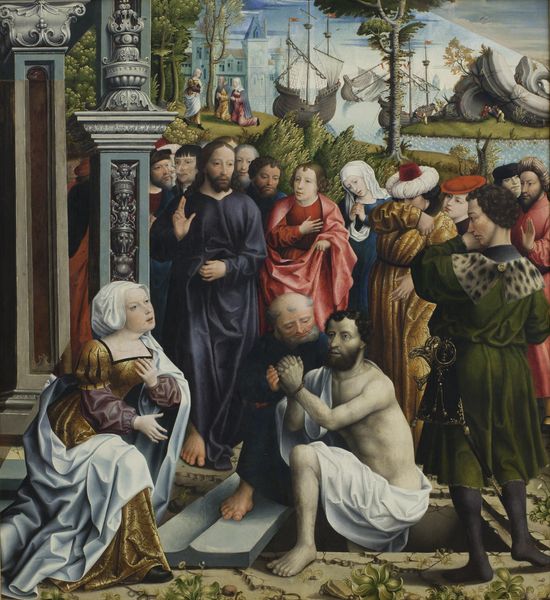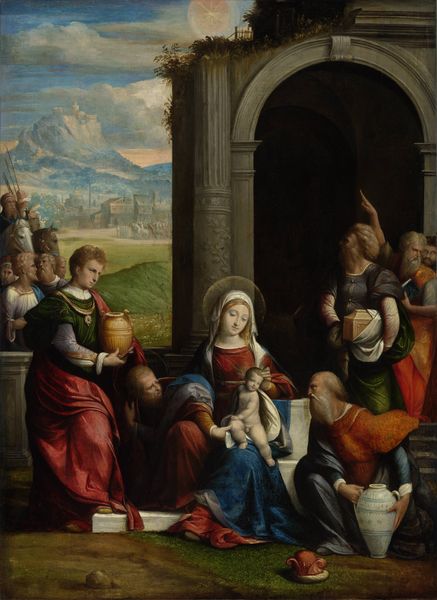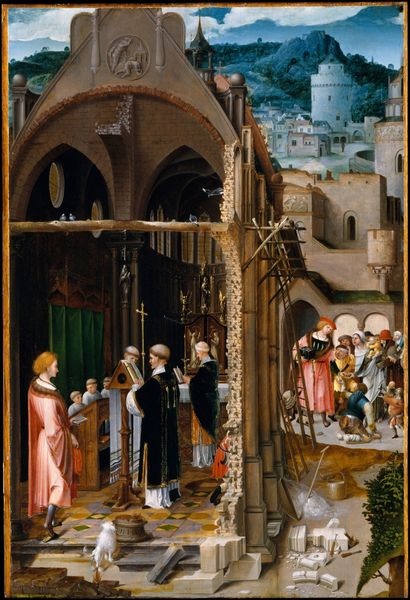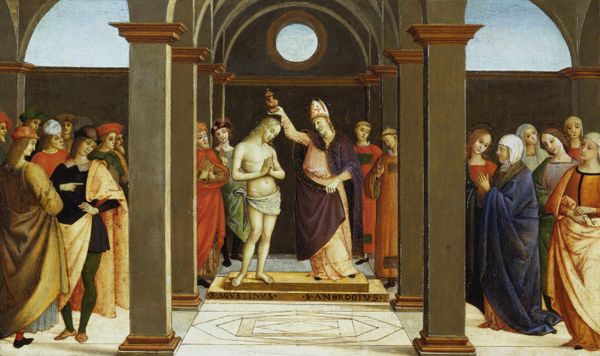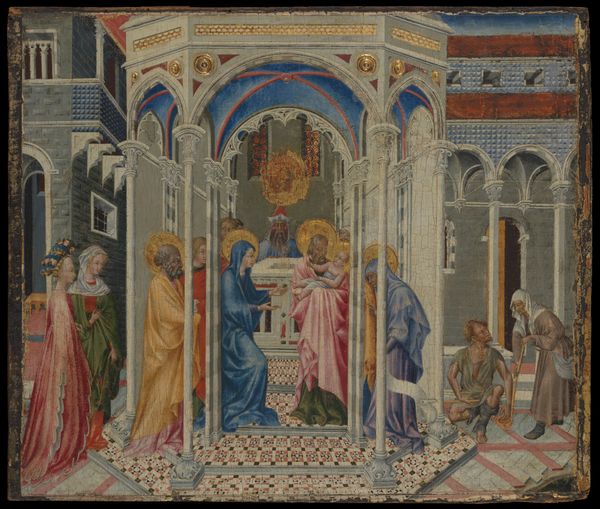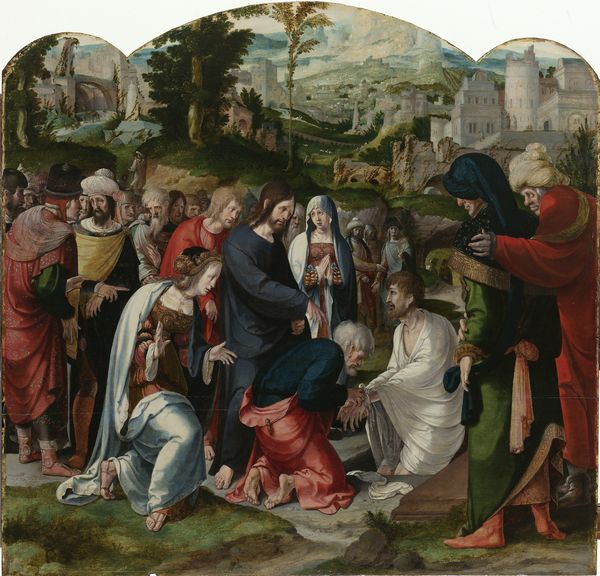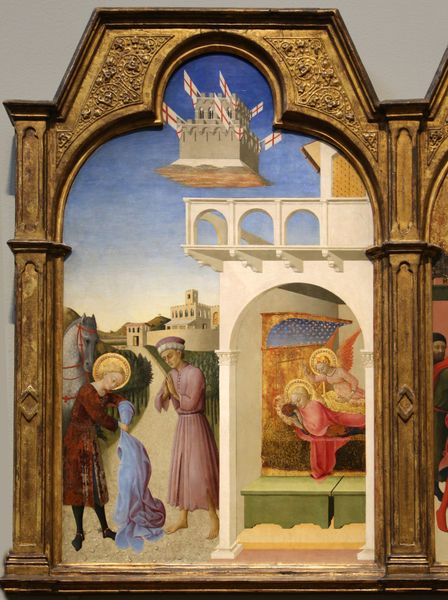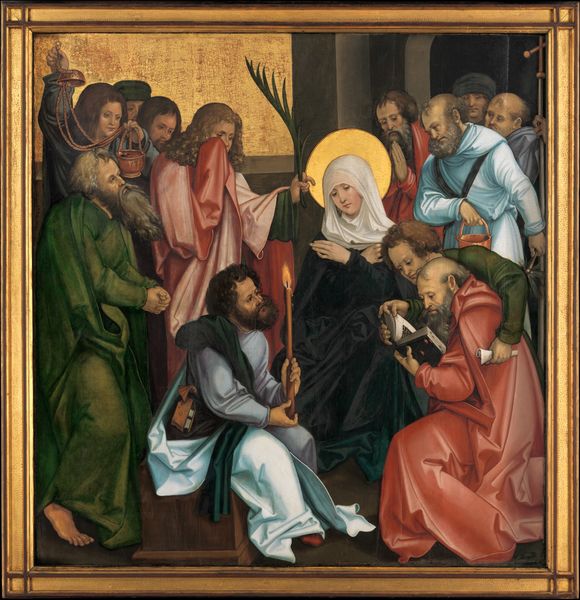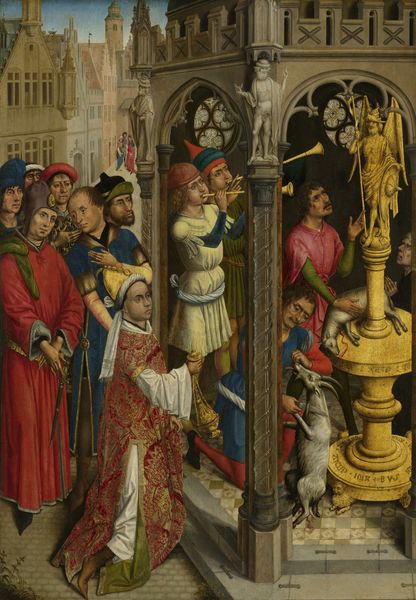![Christ among the Doctors [obverse] by Bernard van Orley](/_next/image?url=https%3A%2F%2Fd2w8kbdekdi1gv.cloudfront.net%2FeyJidWNrZXQiOiAiYXJ0ZXJhLWltYWdlcy1idWNrZXQiLCAia2V5IjogImFydHdvcmtzL2IxYzIxYzFkLTBiYzMtNDUwMi1hMzNhLTYxMmE4ZWUxNmIzMS9iMWMyMWMxZC0wYmMzLTQ1MDItYTMzYS02MTJhOGVlMTZiMzFfZnVsbC5qcGciLCAiZWRpdHMiOiB7InJlc2l6ZSI6IHsid2lkdGgiOiAxOTIwLCAiaGVpZ2h0IjogMTkyMCwgImZpdCI6ICJpbnNpZGUifX19&w=3840&q=75)
panel, painting, oil-paint
#
panel
#
painting
#
oil-paint
#
figuration
#
11_renaissance
#
oil painting
#
history-painting
#
northern-renaissance
#
academic-art
Dimensions: painted surface: 54.4 x 33.3 cm (21 7/16 x 13 1/8 in.) overall (panel): 54.9 x 33.3 cm (21 5/8 x 13 1/8 in.) framed: 63 x 41.8 x 5.7 cm (24 13/16 x 16 7/16 x 2 1/4 in.)
Copyright: National Gallery of Art: CC0 1.0
Curator: Here we have Bernard van Orley’s "Christ among the Doctors," painted around 1513. It’s an oil painting on panel. The first thing that strikes me is its quiet confidence. Editor: Indeed, despite the potential for a chaotic scene – a child amidst scholarly elders – there's a remarkable sense of order and intellectual tension, all rendered with incredible detail. Curator: Van Orley painted this during the Northern Renaissance. Viewing it through a contemporary lens, one might see the child Jesus not just as a figure of religious importance, but as an example of a young person pushing against established institutions. The older men appear to be deep in contemplation; this represents such a critical formative moment. Editor: Precisely. The painting provides us a clear reflection into the socio-political dynamic of intellectualism. It seems the artist captured how this episode amplified the power and influence wielded by religious figures, cementing the politics of imagery that governed 16th-century Europe. Look at the way the architectural setting emphasizes the sacred and scholarly nature of the discussion, effectively framing the young Jesus's challenge as divinely sanctioned disruption of established power. Curator: Right, it challenges the accepted image of a child. Instead of meekness, we see assertiveness, bordering on confrontation. Think about the symbolism of a young Jewish boy arguing his understanding of sacred scriptures to high ranked and powerful Jewish scholars. The piece raises issues of representation and agency. Editor: Considering the piece was crafted within a particular patronage system, its creation and subsequent display become significant markers of social and artistic currents. Works like this reinforce religious doctrine and justify social hierarchy through imagery, acting as both a devotional tool and a testament to patron wealth. Curator: Van Orley uses a very controlled palette and employs some rather intricate detail on their clothing. Its almost a depiction of cultural expectation clashing with emerging voices and viewpoints, a narrative deeply woven into ongoing dialogues of power, gender, and class. Editor: Yes, stepping back, seeing how museums shape our understanding and highlight artistic intention…it’s enlightening to engage with works that served not only aesthetic purposes but as critical elements of social narrative and power dynamics. Curator: I appreciate how this close examination reframes the artwork within layers of societal intention. Editor: Indeed, this deep dive transforms how we view the artist's role.
Comments
No comments
Be the first to comment and join the conversation on the ultimate creative platform.
